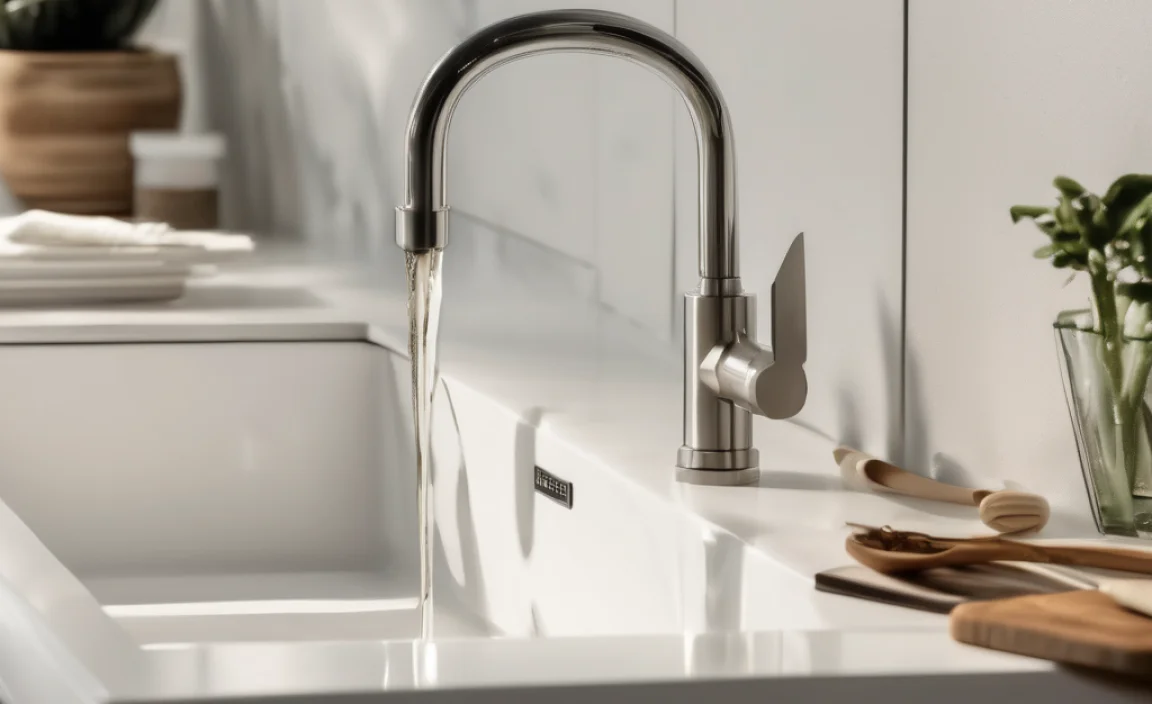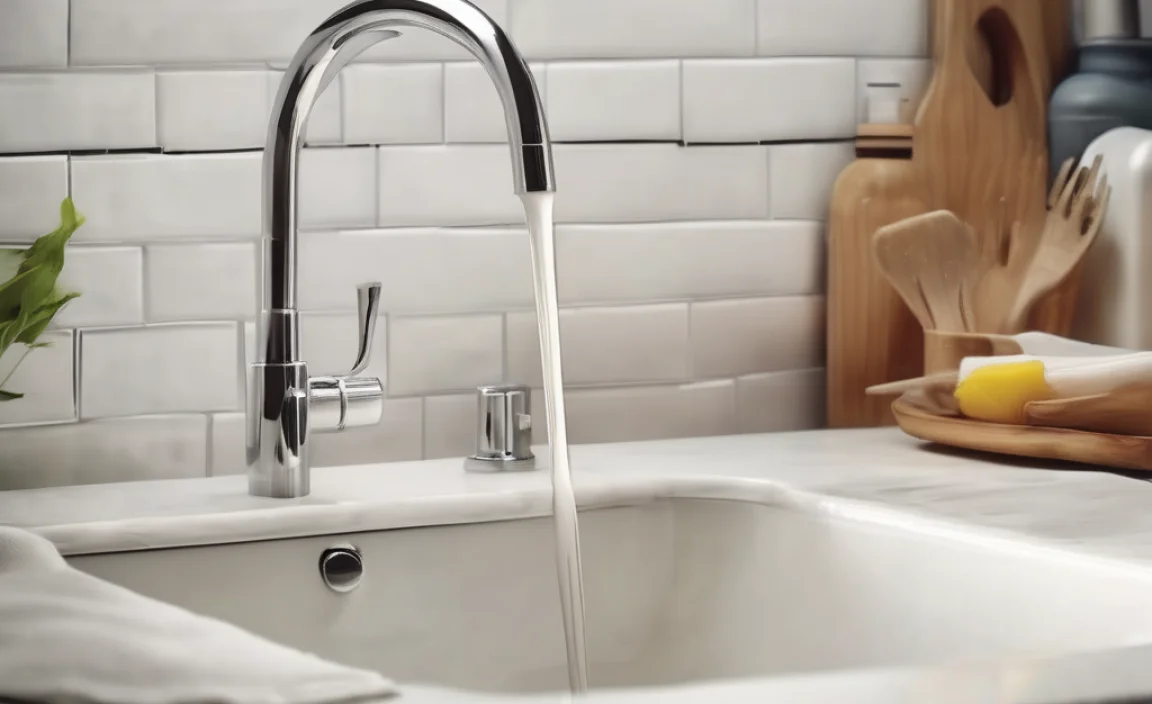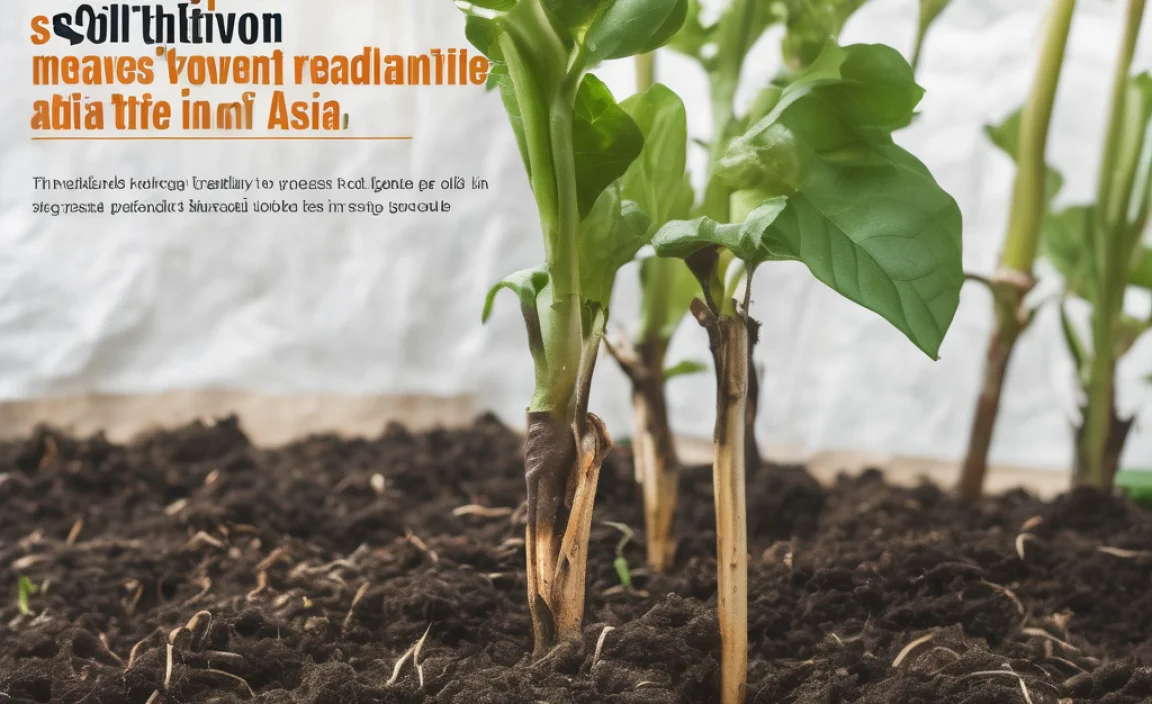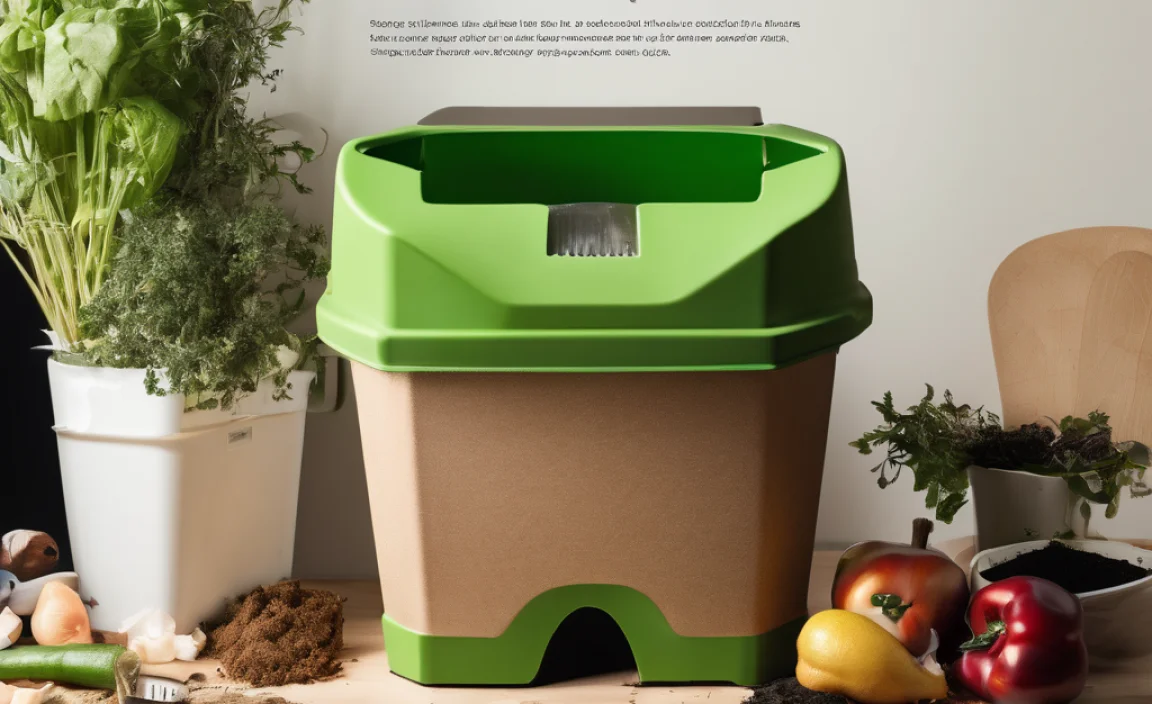Quick Summary: Got a slow or stopped-up sink? No problem! You can often unclog it with vinegar and baking soda. First, clear out any standing water. Then, pour in baking soda, followed by vinegar. Let it fizz, flush with hot water, and repeat if needed. Simple, safe, and effective!
A clogged sink is a common household headache. Water backs up, leaving a mess and a lingering unpleasant odor. But don’t worry! You don’t always need harsh chemicals or a plumber. Often, you can clear that stubborn clog with items you probably already have in your kitchen: vinegar and baking soda. This method is safe, budget-friendly, and surprisingly effective.
We’ll walk you through each step, so you can get your sink draining smoothly again in no time. Let’s get started!
What You’ll Need

Before you start, gather these simple supplies:
- 1 cup baking soda
- 2 cups white vinegar
- Hot water (boiling is even better!)
- A pot or kettle to heat water
- A plunger (optional, but helpful)
- A screwdriver (to remove the drain stopper if needed)
- Gloves (optional, to protect your hands)
- A rag or sponge (to clean up any spills)
Step-by-Step Guide to Unclogging Your Sink with Vinegar

Follow these steps carefully to safely and effectively unclog your sink:
Step 1: Prepare the Sink
The first step is to get your sink ready for unclogging.
- Remove Standing Water: If there’s standing water in the sink, bail it out with a cup or small container. You want the baking soda and vinegar to go directly down the drain.
- Remove the Drain Stopper: Most sinks have a stopper to prevent items from going down the drain. Remove it. You might need a screwdriver to loosen it, depending on the type of stopper you have.
- Clear Debris: Check around the drain opening for any visible debris like hair, food particles, or soap scum. Remove as much as you can by hand or with tweezers.
Step 2: Pour in the Baking Soda
Baking soda is a mild alkali that helps to break down grease and grime. It’s the first ingredient in our dynamic duo.
- Measure Baking Soda: Measure out about 1 cup of baking soda.
- Pour Down the Drain: Slowly pour the baking soda directly down the drain opening. Try to get as much of it into the drain as possible.
Step 3: Add the Vinegar
Vinegar, an acid, reacts with baking soda to create fizzing action that helps dislodge the clog.
- Measure Vinegar: Measure out about 2 cups of white vinegar.
- Pour Down the Drain: Immediately after the baking soda, pour the vinegar down the drain.
Step 4: Let it Fizz!
This is where the magic happens! The baking soda and vinegar will react, creating a fizzing and bubbling action.
- Observe the Reaction: You should see and hear the mixture fizzing in the drain.
- Let it Sit: Let the mixture sit for at least 30 minutes. For stubborn clogs, you can let it sit for a few hours, or even overnight. Cover the drain opening with a plug or rag to contain the fizz and help it work more effectively.
Step 5: Flush with Hot Water
After the fizzing action has had time to work, it’s time to flush the drain with hot water.
- Heat the Water: Heat a pot or kettle of water until it’s hot, but not scalding. Boiling water is ideal, but be careful handling it.
- Pour Down the Drain: Carefully pour the hot water down the drain. The hot water will help to dissolve any remaining grease and flush away the loosened clog.
- Run the Tap: Turn on the hot water tap and let it run for a few minutes to ensure the drain is clear.
Step 6: Test the Drain
Now it’s time to see if your efforts have paid off!
- Check the Drainage: Observe how quickly the water drains. If it drains quickly and smoothly, you’ve successfully unclogged the sink!
- Repeat if Necessary: If the drain is still slow, repeat the entire process (steps 2-5) one or two more times. Sometimes, a particularly stubborn clog requires a few attempts.
Step 7: Plunge if Needed (Optional)
If the vinegar and baking soda method doesn’t completely clear the clog, a plunger can help.
- Add Water: Add enough water to the sink to cover the cup of the plunger.
- Plunge Vigorously: Place the plunger over the drain opening, ensuring a good seal. Plunge vigorously up and down for several minutes.
- Remove the Plunger: Remove the plunger and check if the water drains freely.
- Repeat if Necessary: Repeat the plunging process several times if needed.
Step 8: Clean Up
Once the sink is unclogged, give it a good cleaning.
- Rinse the Sink: Rinse the sink thoroughly with clean water to remove any residue.
- Clean the Stopper: Clean the drain stopper to remove any accumulated debris.
- Wipe Down Surfaces: Wipe down the sink and surrounding surfaces with a clean rag or sponge to remove any spills.
Troubleshooting Tips

Sometimes, even with the best efforts, a clog can be stubborn. Here are some troubleshooting tips:
- Stubborn Clogs: For very stubborn clogs, try using a drain snake or auger after the vinegar and baking soda treatment. These tools can physically break up or remove the clog.
- Preventative Measures: To prevent future clogs, avoid pouring grease down the drain. Use a drain strainer to catch hair and food particles. Flush the drain with hot water regularly.
- Check the P-Trap: The P-trap is the curved pipe under your sink. It can often trap debris. If the clog persists, you may need to remove and clean the P-trap. Place a bucket underneath to catch any water.
Safety First!

While using vinegar and baking soda is generally safe, keep these precautions in mind:
- Eye Protection: Although it’s unlikely, consider wearing eye protection to prevent splashes.
- Ventilation: Ensure the area is well-ventilated.
- Avoid Mixing with Other Cleaners: Never mix vinegar and baking soda with other drain cleaners, especially those containing bleach. This can create dangerous fumes.
- Hot Water Safety: Be extremely careful when handling hot or boiling water to avoid burns.
When to Call a Plumber

Sometimes, a clog is beyond the scope of DIY solutions. Here are situations when you should call a professional plumber:
- Persistent Clogs: If you’ve tried multiple methods and the clog persists, it could indicate a more serious problem deeper in your plumbing system.
- Multiple Clogged Drains: If multiple drains in your home are clogged, it could indicate a problem with your main sewer line.
- Sewage Backup: If you experience sewage backup in your sink or other drains, this is a serious issue that requires immediate professional attention.
- Unfamiliar Plumbing: If you’re not comfortable working with plumbing or are unsure about any step, it’s best to call a plumber to avoid damaging your pipes or causing further problems.
Alternative Methods
While vinegar and baking soda are a great first line of defense, here are some other options you can explore. Note that some of these are harsher and should be used with caution.
- Boiling Water: Sometimes, a simple flush with boiling water can dislodge a clog, especially if it’s caused by grease.
- Plunger: A good old-fashioned plunger can often clear simple clogs.
- Drain Snake: A drain snake (or auger) is a flexible tool that can be inserted into the drain to break up or remove clogs.
- Chemical Drain Cleaners: Use these as a last resort, as they can be harsh on your pipes and the environment. Always follow the instructions carefully and wear appropriate safety gear.
Cost Comparison: DIY vs. Plumber
Here’s a quick look at the cost differences between DIY unclogging and hiring a plumber:
| Method | Estimated Cost | Pros | Cons |
|---|---|---|---|
| DIY (Vinegar & Baking Soda) | $5 – $10 (mostly for materials if you don’t have them) | Inexpensive, environmentally friendly, readily available materials | May not work for severe clogs |
| DIY (Plunger) | $5 – $20 (for the plunger) | Effective for many common clogs, reusable | Requires some physical effort, may not work on all types of clogs |
| DIY (Drain Snake) | $10 – $50 (for the drain snake) | Can reach deeper clogs, reusable | Requires some skill, can damage pipes if used improperly |
| Plumber | $100 – $300+ (depending on the complexity and location) | Professional expertise, solves complex problems, avoids potential damage | More expensive, requires scheduling an appointment |
Preventative Maintenance
The best way to deal with a clogged sink is to prevent it from happening in the first place. Here are some tips:
- Use a Drain Strainer: A drain strainer is a simple and inexpensive device that catches hair and food particles before they go down the drain.
- Avoid Pouring Grease Down the Drain: Grease is a major culprit when it comes to clogged drains. Pour grease into a container and dispose of it properly.
- Flush with Hot Water Regularly: Run hot water down the drain for a few minutes each week to help flush away any buildup.
- Baking Soda and Vinegar Maintenance: Once a month, pour a mixture of baking soda and vinegar down the drain as a preventative measure.
Frequently Asked Questions (FAQs)
Q: How often should I use the vinegar and baking soda method to clean my drains?
A: You can use the vinegar and baking soda method every month or two as a preventative measure to keep your drains clear. If you notice your sink draining slowly, that’s a good time to use it.
Q: Can I use this method on all types of sinks?
A: Yes, the vinegar and baking soda method is safe for most types of sinks, including stainless steel, porcelain, and ceramic. However, avoid using it on sinks made of natural stone like marble, as the vinegar could potentially damage the surface.
Q: What if the clog is caused by hair?
A: Hair is a common cause of clogs. The vinegar and baking soda method can help to break down some of the hair, but you may also need to use a tool like tweezers or a drain snake to physically remove the hair from the drain.
Q: Can I use apple cider vinegar instead of white vinegar?
A: While white vinegar is generally preferred for cleaning due to its higher acidity, you can use apple cider vinegar as a substitute. It may not be quite as effective, but it will still provide some cleaning and unclogging action.
Q: How long should I wait before flushing with hot water?
A: It’s best to wait at least 30 minutes after pouring the vinegar and baking soda down the drain before flushing with hot water. For stubborn clogs, you can wait several hours or even overnight.
Q: Is it safe to use this method if I have a septic system?
A: Yes, the vinegar and baking soda method is generally safe for septic systems. Unlike harsh chemical drain cleaners, vinegar and baking soda are natural and won’t harm the beneficial bacteria in your septic tank.
Q: The drain is still clogged after trying this method multiple times. What should I do?
A: If the drain remains clogged after several attempts, it may be time to try a different method, such as using a plunger or drain snake. If those methods don’t work, the clog may be too severe, and you should consider calling a professional plumber.
Conclusion
Unclogging a sink with vinegar and baking soda is a simple, effective, and eco-friendly solution to a common household problem. By following these easy steps, you can often clear a clogged drain without resorting to harsh chemicals or expensive plumber visits. Remember to take preventative measures to avoid future clogs, and don’t hesitate to call a professional if the problem persists. With a little patience and the right approach, you can keep your sinks draining smoothly and your plumbing system in good working order.



